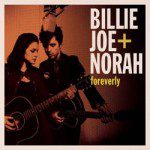Review: Ray Charles- Genius + Soul = Jazz (reissue)
There aren’t too many musical stones that the legendary Ray Charles left unturned. From pop to R&B to country, rock, soul, jazz, gospel, and blues, name it and Ray undoubtedly covered it at some point in his career and on the recent 2-disc reissue of Genius + Soul = Jazz, we are treated to perhaps the ultimate portrait of Charles as a jazz performer. This isn’t the most interesting part of his career, nor did it create the best music, but for the most part it is ultimately well worth checking out for fans of Ray, jazz, or both.
This reissue actually contains not one but four Ray Charles albums. 1961’s Genius + Soul = Jazz and 1970’s My Kind of Jazz both found on the first disc, while Jazz, Part II and My Kind of Jazz, Part 3, from 1972 and 1975 respectively, comprise disc two.
The original 1961 album is nearly flawless. Ray, playing the Hammond organ, leads the band through pieces both old and new creating perhaps one of the last great “big band” recordings. Particular highlights include their rendition of Art Blakely’s “Moanin’,” Charles’ own composition “Let’s Go” which displays the band in top form and may be the best on the album, the blues-based original “Mister C,” and the hit “One Mint Julep,” which owes more to other early ’60s pop and rock instrumentals than to jazz. Charles’ exceptional organ playing and the wonderful trumpet playing of Phillip Guilbeau are major highlights of the album, particularly on “Birth of the Blues.” Fans of Charles’ more soul-oriented work will not be disappointed in the album’s two vocal numbers, the blues jumper “I’ve Got News for You” and the slow, Billie Holiday-esque ballad “I’m Gonna Move to the Outskirts of Town.” Overall, this album is not quite as essential as his classic ’50s sides or Modern Sounds in Country & Western Music, but it does rank as one of his most consistent albums and one that fans should probably have in their collection.
My Kind of Jazz is also very good, but not quite up to the standards of it’s predecessor, in part because Ray has left the organ behind and switched back to piano, making the sound somewhat less distinctive. It is also clear from the outset that nine years have passed in between the two albums as the opening track “Golden Boy” has late ’60s pop written all over it and the album as a whole contains a lot more guitar. This works excellently on the Charles original “Booty-Butt,” which is a cool, urban, R&B number with minimal vocals. Other highlights include the slow standard “I Remember Clifford,” the full-band workout of “Zig Zag,” and the Spanish-flavored album closer “Senor Blues.” Ultimately, this album isn’t essential by any means, but it is a fun listen that should appeal to fans.
However, disc two is much spottier. Jazz Number II from 1972 opens very strongly with “Our Suite,” an ambitious original in four parts that could be the ultimate example of Ray as a composer outside the constraints of pop music. The rest of the album fails to live up to the opener, but there are highlights throughout, in particular the two Latin-tinged pieces, “Morning of Carnival (Manaha de Carnival)” and “Brazilian Skies,” but for the most part it is very average and with fewer keyboard solos than the first two albums, one gets the feeling that Ray was just playing along with the band (who are in excellent form).
If things were average on Jazz Number Two, 1975’s My Kind of Jazz, Part 3 is possibly the least essential album in Charles’ catalog, although it is really not accurate to refer to it as a Ray Charles album. He only plays on the first track, a wonderful version of Duke Ellington’s “I’m Gonna Go Fishin’.” After this he is conspicuously absent and the orchestra plays the remaining eight tracks without it’s leader. They are very good musicians and Alf Clausen’s “For Her” is an excellent piece, but the band alone isn’t enough to hold an album together, making this one a huge mess for the most part.
Thankfully, the album ends with a bonus track featuring Ray himself: a great 1997 recording of the standard “Misty.”
In conclusion what you will find on this collection is all of Ray’s straight jazz recordings you will ever need (the recordings mixing jazz with R&B and pop are another matter entirely). What you will find here is one great album, one very good album, and a second disc ranging from superb to sub-par. But I think it is ultimately a worthwhile purchase for fans of Ray who want to explore a less publicized facet of his career.




